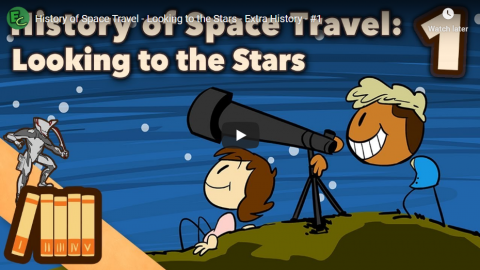In the latest post at Astral Codex Ten, Scott Alexander considers prophecy “From Nostradamus to Fukuyama”. Here’s the section on Nostradamus (because I don’t have a lot of time for Fukuyama, you’ll have to read the rest at ACX):

“House of Nostradamus in Salon, France. Now a museum.” by photographymontreal is marked with Public Domain Mark 1.0 .
Nostradamus was a 16th century French physician who claimed to be able to see the future.
(never trust doctors who dabble in futurology, that’s my advice)
His method was: read books of other people’s prophecies and calculate some astrological charts, until he felt like he had a pretty good idea what would happen in the future. Then write it down in the form of obscure allusions and multilingual semi-gibberish, to placate religious authorities (who apparently hated prophecies, but loved prophecies phrased as obscure allusions and multilingual semi-gibberish).
In 1559, he got his big break. During a jousting match, a count killed King Henry II of France with a lance through the visor of his helmet. Years earlier, Nostradamus had written:
The young lion will overcome the older one,
On the field of combat in a single battle;
He will pierce his eyes through a golden cage,
Two wounds made one, then he dies a cruel deathThe nobleman was a bit younger than the king, supposedly they both had lions on their shield (false), maybe King Henry was wearing a golden helmet (I can’t find evidence for this, but as a consolation prize please accept this picture of his amazing parade armor), and his slow agonizing death over ten days from his wounds was pretty cruel. Seems like a match, sort of. Anyway, for the next five hundred years lots of people were really into Nostradamus and spent goodness knows how many brain cycles trying to interpret his incomprehensible quatrains.
The basic Nostradamic method was:
Write 942 vague and incomprehensible quatrains, out of order and without any dates.
Whenever something happens, say “that sounds a lot like quatrain #143!” or “quatrain #558 predicted that”
Prophet
For example, prophecy 106:
Near the gates and within two cities
There will be two scourges the like of which was never seen,
Famine within plague, people put out by steel,
Crying to the great immortal God for reliefThis is an okay match for the atomic bombs, in the sense that there were two cities where something really bad happened. But read on to prophecy 107:
Amongst several transported to the isles,
One to be born with two teeth in his mouth
They will die of famine the trees stripped,
For them a new King issues a new edict.… and it starts to sound like he’s just kind of saying random stuff and some of it’s sticking by sheer luck.
A few prophecies sound more impressive than this, eg:
The lost thing is discovered, hidden for many centuries.
Pasteur will be celebrated almost as a god-like figure.
This is when the moon completes her great cycle,
but by other rumours he shall be dishonouredThis seems to name Pasteur, who was indeed a celebrated discoverer of things. And Nostradamus scholars note that a historian accused Pasteur of plagiarism in 1995, which is a kind of dishonorable rumor. But the work here is being done by the translator: Pasteur is just French for “pastor”, and an honest translation would have just said “the pastor will be celebrated …”, which is in tune with all his other vague allusions to things happening.
The blood of the just will be demanded of London
Burnt by fire in the year ’66
The ancient Lady will fall from her high place
And many of the same sect will be killed.Seems like a match for the London fire of 1666. But again checking the original French and the commentators, the second line is more properly “burnt by fire in 23 the 6”, which a fanciful translator rounded off to 20 * 3 + 6 = 66 and then assumed was a year. The experts say that this is really a coded reference to 23 Protestants being burned, in groups of six, during Nostradamus’ lifetime (many of his quatrains are references to past or present events, for some reason). This sounds more compatible with the “many of the same sect will be killed” ending.
I had a weird experience writing the end of this first part of the post. When I was a kid, reading through my parents’ old books, I came across an weird almanac from the 70s that had a section on Nostradamus. It listed some of his most famous prophecies, including the ones above, but also (reconstructing from memory and probably getting some things wrong, sorry):
The way of life according to Thomas More
Will give way to another more sweet and seductive
In the land of cold winds that first gave it birth
Without strife, without a war it will fall… and the 70s almanac interpreted this as meaning Soviet communism would fall peacefully. Reading this in 1995 or whenever it was I read it, a few years after Soviet communism did fall peacefully, I was really impressed: this is the only example I know where someone used a Nostradamus quatrain to predict something before it happened.
But I searched for the exact text so I could include the correct version in this essay, and I didn’t find it — this is none of Nostradamus’ 942 prophecies! The almanac authors must have made it up, or unwittingly copied it from someone else who did.
But I remember this very clearly — the almanac was from 1970-something. So how did the faker know Russian communism would collapse?
The moral of the story is: just because Nostradamus wasn’t a real prophet, doesn’t mean nobody else is.






